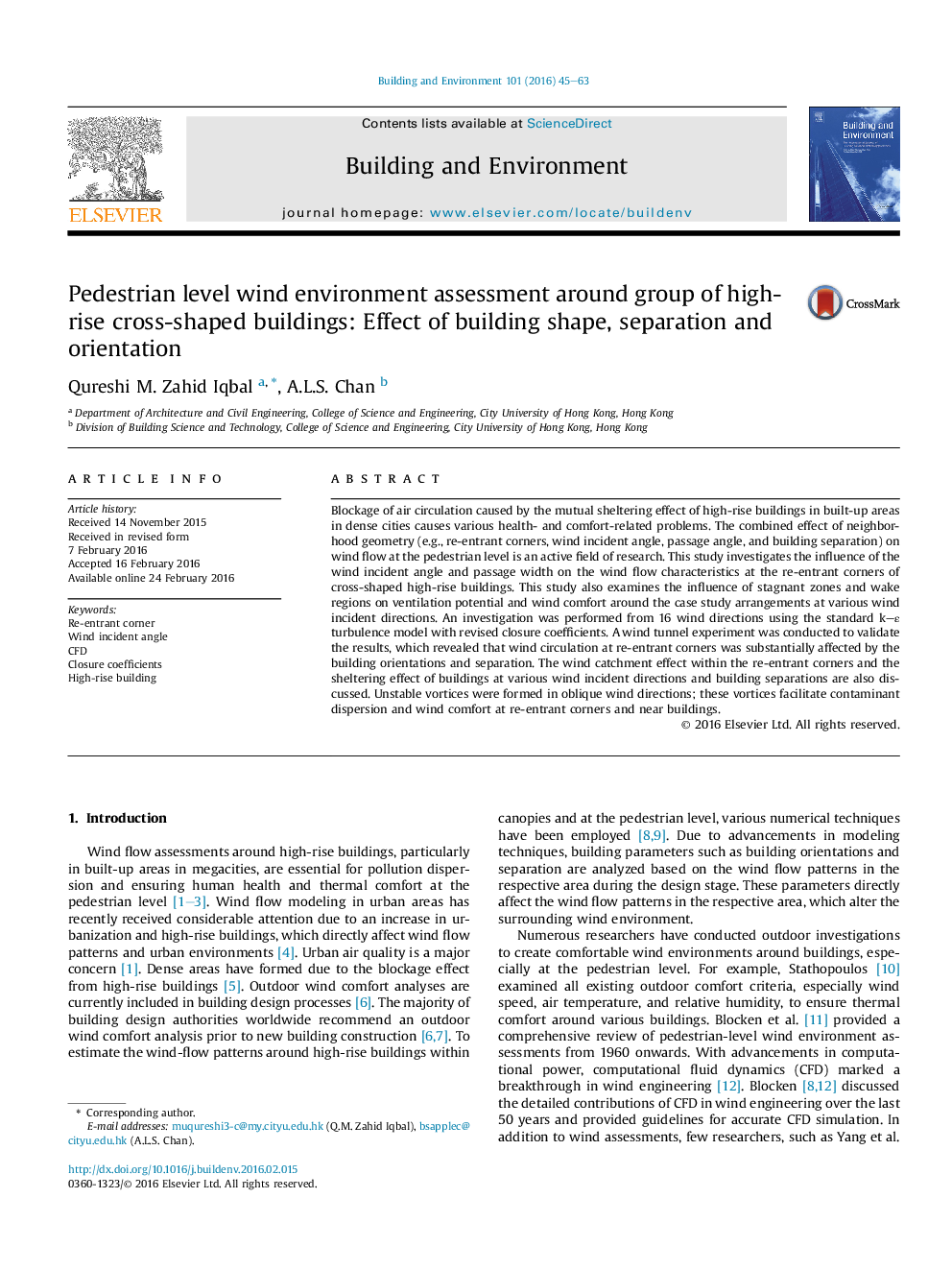| Article ID | Journal | Published Year | Pages | File Type |
|---|---|---|---|---|
| 6699339 | Building and Environment | 2016 | 19 Pages |
Abstract
Blockage of air circulation caused by the mutual sheltering effect of high-rise buildings in built-up areas in dense cities causes various health- and comfort-related problems. The combined effect of neighborhood geometry (e.g., re-entrant corners, wind incident angle, passage angle, and building separation) on wind flow at the pedestrian level is an active field of research. This study investigates the influence of the wind incident angle and passage width on the wind flow characteristics at the re-entrant corners of cross-shaped high-rise buildings. This study also examines the influence of stagnant zones and wake regions on ventilation potential and wind comfort around the case study arrangements at various wind incident directions. An investigation was performed from 16 wind directions using the standard k-ε turbulence model with revised closure coefficients. A wind tunnel experiment was conducted to validate the results, which revealed that wind circulation at re-entrant corners was substantially affected by the building orientations and separation. The wind catchment effect within the re-entrant corners and the sheltering effect of buildings at various wind incident directions and building separations are also discussed. Unstable vortices were formed in oblique wind directions; these vortices facilitate contaminant dispersion and wind comfort at re-entrant corners and near buildings.
Related Topics
Physical Sciences and Engineering
Energy
Renewable Energy, Sustainability and the Environment
Authors
Qureshi M. Zahid Iqbal, A.L.S. Chan,
